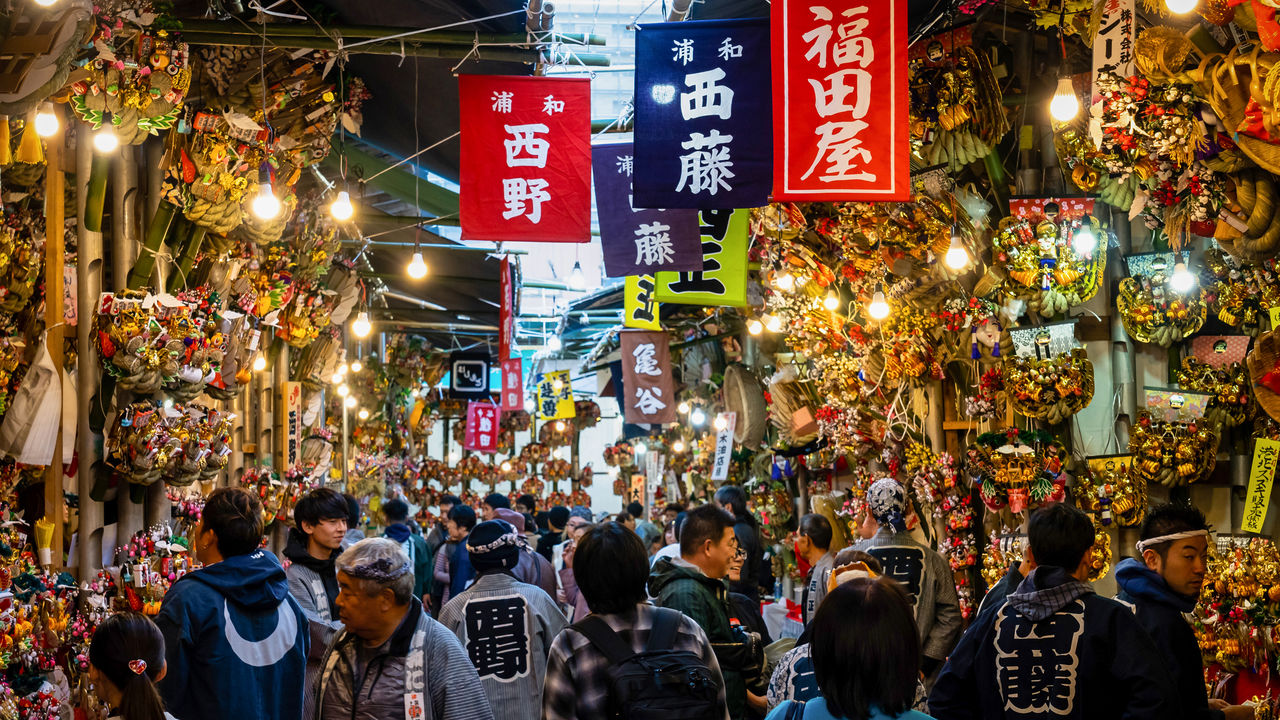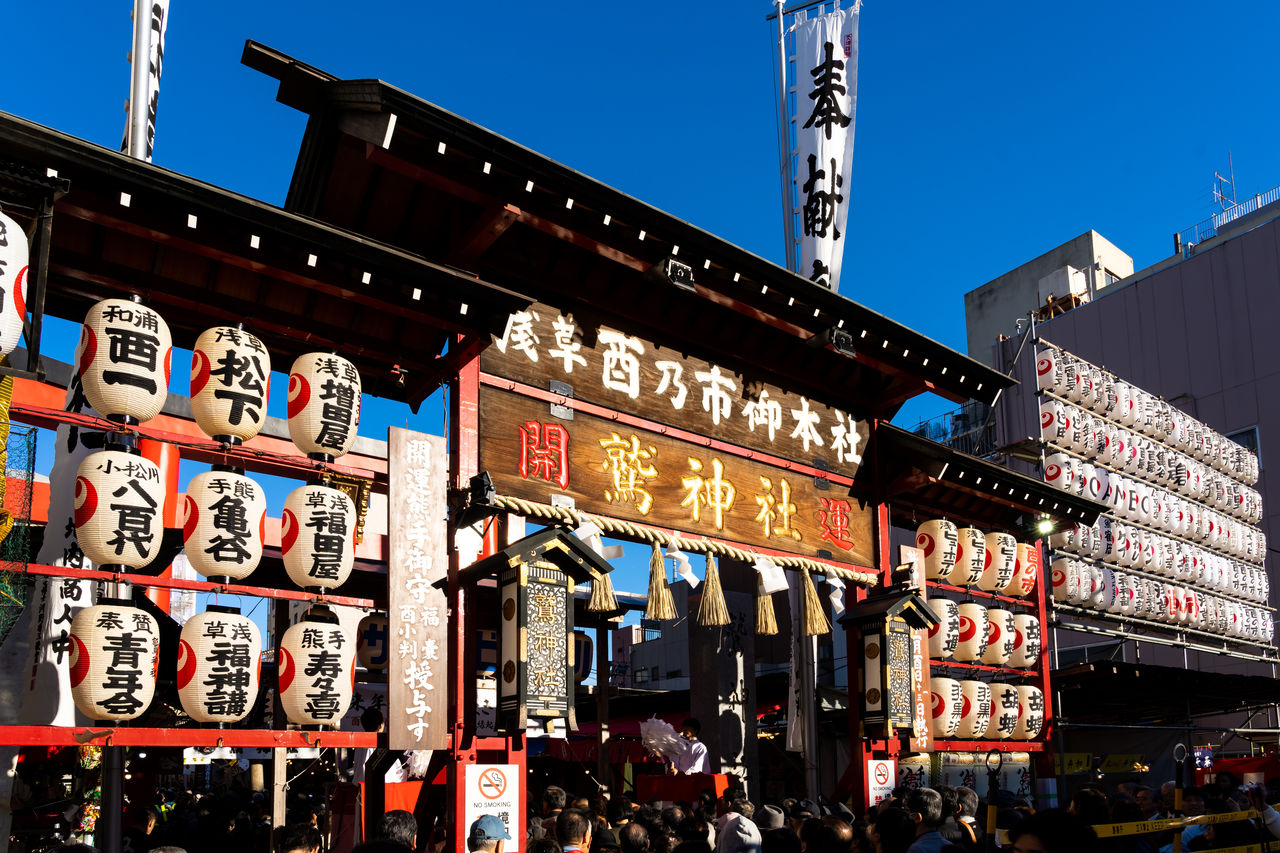
Good Fortune in the Fall: The Tori no Ichi Markets at Asakusa’s Ōtori Shrine
JapanIn video
Guide to Japan- English
- 日本語
- 简体字
- 繁體字
- Français
- Español
- العربية
- Русский
In November, Shintō shrines in Japan’s Kantō region and elsewhere come alive with festive markets known as Tori no Ichi. Tori no Ichi are traditionally held on (and named after) the day of the rooster (tori) on the old lunisolar calendar. Since the cycle is 12 days long, there are two or three of these market festivals each November, depending on the year. Don’t worry, though—tradition holds that every Tori no Ichi is equally auspicious for visitors.
 Ōtori Shrine’s Tori no Ichi is one of the largest and busiest, with rows of stalls stretching out of the shrine grounds to line the surrounding streets of Asakusa, Tokyo.
Ōtori Shrine’s Tori no Ichi is one of the largest and busiest, with rows of stalls stretching out of the shrine grounds to line the surrounding streets of Asakusa, Tokyo.
The birthplace of the Tori no Ichi tradition is said to be Ōtori Shrine, located in the Asakusa area in present-day Taitō. In this area the legendary prince Yamato Takeru is said to have prayed for victory before mounting a military campaign against unruly tribes in eastern Japan; following his victory, he returned and offered thanks on the day of the rooster in the eleventh month of the year. Today, the Tori no Ichi at this shrine hosts around 150 vendors of kumade—ceremonial bamboo rakes for “raking in” good fortune—as well as 750 other stalls offering food, drinks, souvenirs, and entertainment. Every kumade purchase is announced by a loud cry of “Peace at home, success in business!” (Kanai anzen, shōbai hanjō!) followed by a clapping ritual known as sanbon-jime, traditionally performed by merchant and customer together—just the thing to see visitors through the end of the year in high spirits.
 Tori no Ichi are famous for the spirited clapping from kumade vendors.
Tori no Ichi are famous for the spirited clapping from kumade vendors.
 Kumade can include all kinds of additional auspicious designs, from the cheerful Okame (or Otafuku) to “lucky cats” (manekineko), crane-and-turtle motifs, bales of rice, koban coins, pine trees, and shimenawa ropes like those seen at shrines.
Kumade can include all kinds of additional auspicious designs, from the cheerful Okame (or Otafuku) to “lucky cats” (manekineko), crane-and-turtle motifs, bales of rice, koban coins, pine trees, and shimenawa ropes like those seen at shrines.
 Kumade for display start at around ¥1,000 but can command prices well into six figures. The most popular range from around ¥20,000 to ¥50,000.
Kumade for display start at around ¥1,000 but can command prices well into six figures. The most popular range from around ¥20,000 to ¥50,000.
(Originally published in Japanese on November 13, 2018. Photos by Miwa Noriaki. Video by Nippon.com. Banner photo: Lively scenes at Ōtori Shrine between the rows of kumade vendors.)
Related Tags
Asakusa tourism festivals Tokyo shrine Shrines and Temples kantō Taitō-ku
